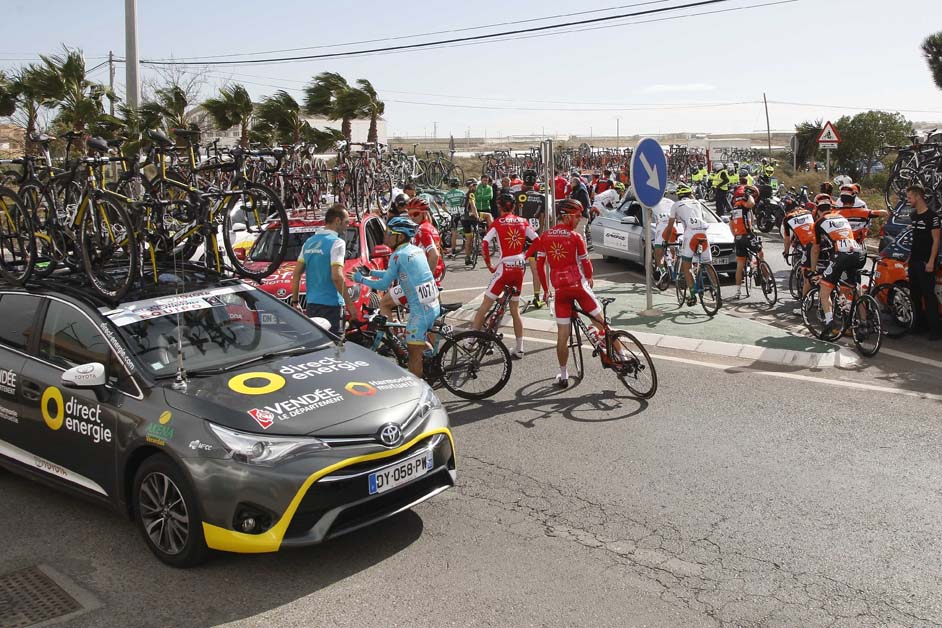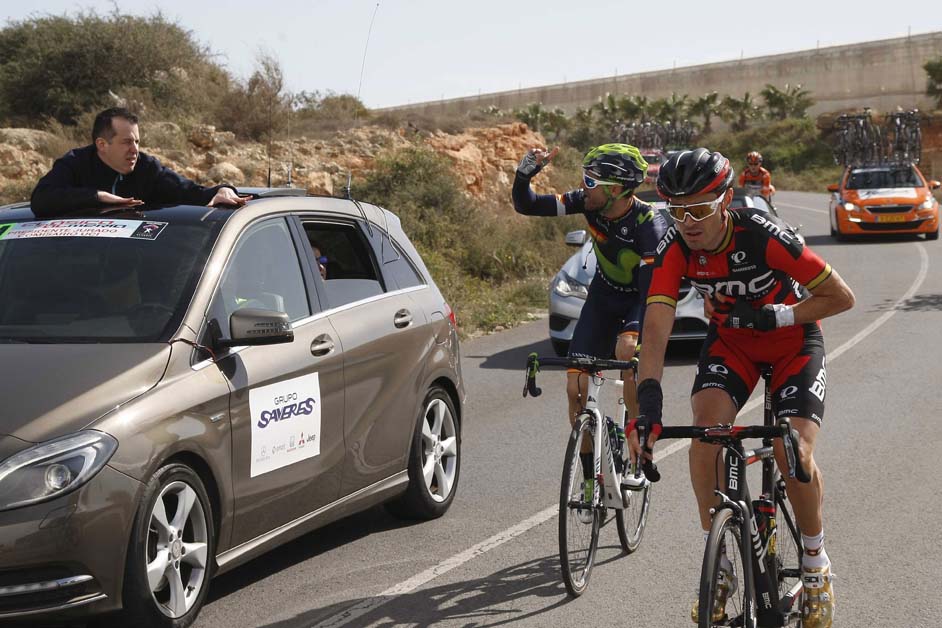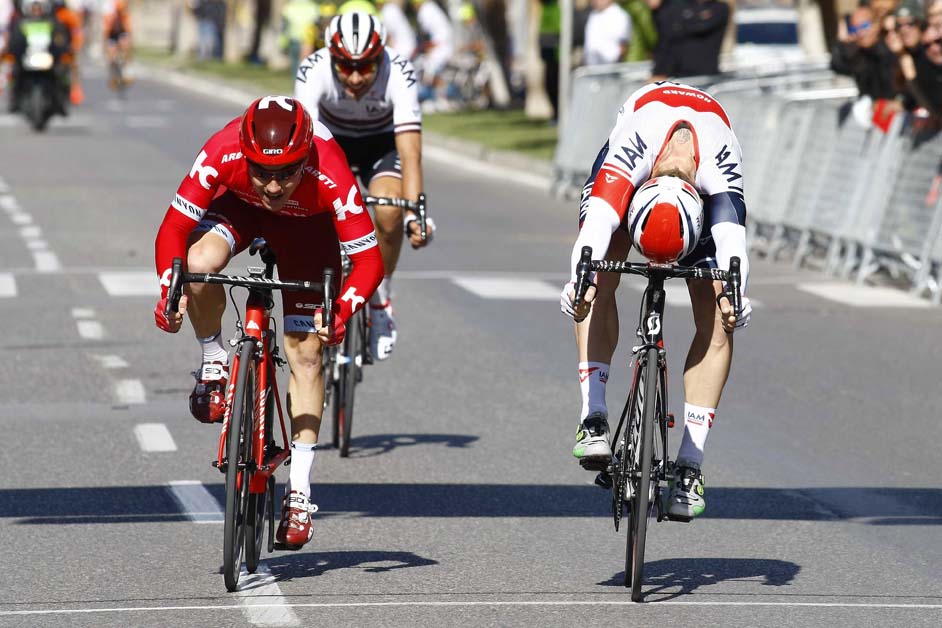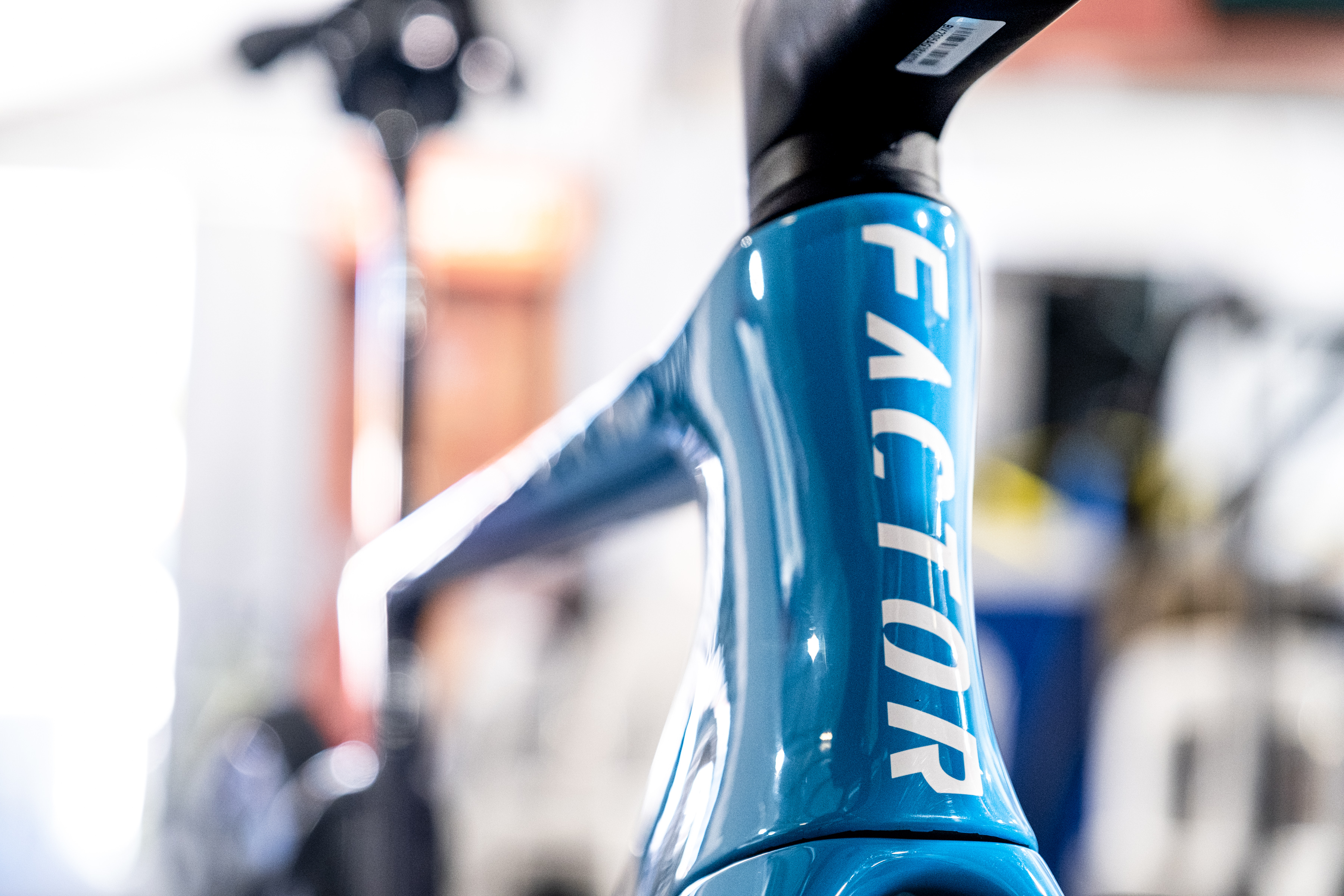Extreme weather protocol gets tested in Clasica de Almeria
First execution of new UCI rule in wind-blown Spanish race




The UCI's new Extreme Weather Protocol got its first test in Sunday's Clasica de Almeria in Spain, when high winds forced the shortening of the 31st edition of the race.
160 riders battle through the snow and cold at the Giro d'Italia
Giro d'Italia race radio message causes confusion on the Stelvio
UCI to consider extreme weather protocol
David Millar to represent riders in Extreme Weather Protocol talks
Extreme Weather Protocol a success, but needs improvement says Bookwalter
Originally intended to run 184km along the coast from Almeria, west to Adra, and then back to Roquetas de Mar with two inland loops, the race passed through sections along the coast where winds were howling up to 80kph.
Movistar directeur sportif José Luis Arrieta described the conditions: "The crosswinds were so strong that you could make your bike become a sail and be thrown into the ditch if you didn't ride strong or remained still. I even had to save some riders from the wind with the team car to avoid them crashing."
Similar conditions affected last year's Gent-Wevelgem: Gert Steegmans was blown off the road into a canal, and Geraint Thomas was thrown into the verge by a gust of wind. The riders in Clasica de Almeria did not want to face similar risks of injury.
The peloton agreed to start neutralised on the original route, but only got as far as La Mojonera, some 40km down the road, where race organiser José Manuel Muñoz said it became impossible to continue.
"Usually this time of year in Almeria is extraordinary, we had a very good winter, but even before yesterday was very bad and now it has been impossible, riders were having to put their feet down (to keep from crashing)," he said to Marca.
The race was moved to Roquetas de Mar, where riders competed on seven laps of a hastily-arranged 3.5km circuit. Leigh Howard (IAM Cycling) won over Katusha's Alexey Tsatevich.
The latest race content, interviews, features, reviews and expert buying guides, direct to your inbox!
Astana's Dario Cataldo was happy to be able to complete the race, no matter how shortened. “The weather conditions were very difficult today with guts of wind that were putting our safety in serious danger," Cataldo said. "Nonetheless, we did our best to honour the commitment of the organizers and we tried to do the race anyway…”
“Then we went straight to the final circuit in Almeria, the wind was so strong even in there and the race was much shorter than we thought but it has been a real race for sure. In the final kilometers we tried to enter in the numerous attacks but we weren't lucky… at least it was positive not having injuries (only Kangert felt down but without consequences) and also we have honored the race and the organizers."
High wind is just one of many dangerous weather events that racers have been subjected to over the years. Snow, ice, high heat, lightning storms and even possible tornadoes have wrecked havoc on pro races, but until now there has never been a cohesive effort to create contingency plans for the riders.
The Extreme Weather Protocol was created in part because of the mass confusion that surrounded the neutralisation of a snowy descent from the Stelvio in the Giro d'Italia, where eventual race winner Nairo Quintana (Movistar) aroused controversy by attacking in the snow.
One year later, the riders' association CPA, the ANAPRC (Association of North American Professional Road Cyclists) teams association and race organisers agreed to the Extreme Weather Protocol, and it was entered into the UCI rules for road racing on January 1 this year.

Laura Weislo has been with Cyclingnews since 2006 after making a switch from a career in science. As Managing Editor, she coordinates coverage for North American events and global news. As former elite-level road racer who dabbled in cyclo-cross and track, Laura has a passion for all three disciplines. When not working she likes to go camping and explore lesser traveled roads, paths and gravel tracks. Laura specialises in covering doping, anti-doping, UCI governance and performing data analysis.
